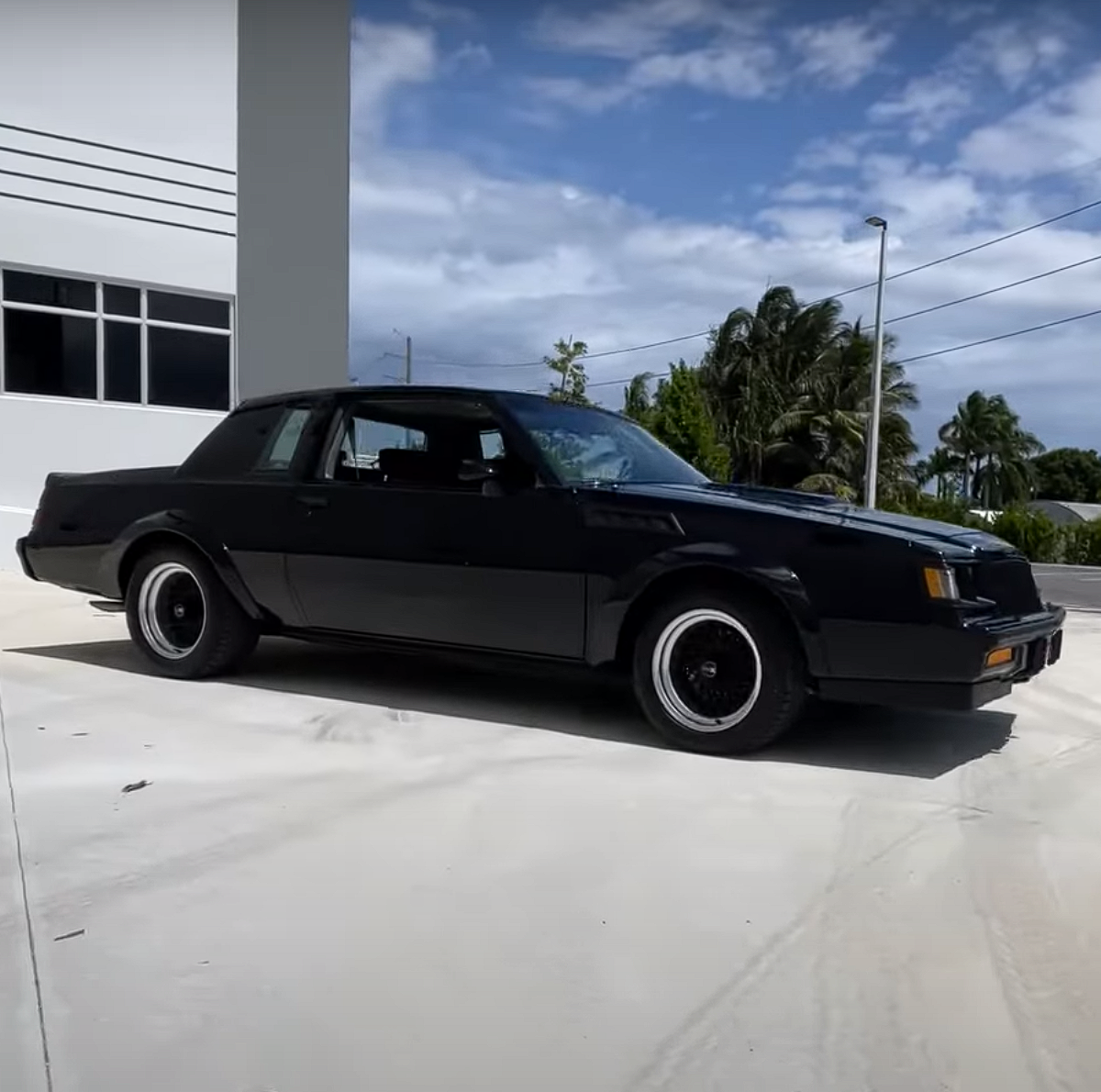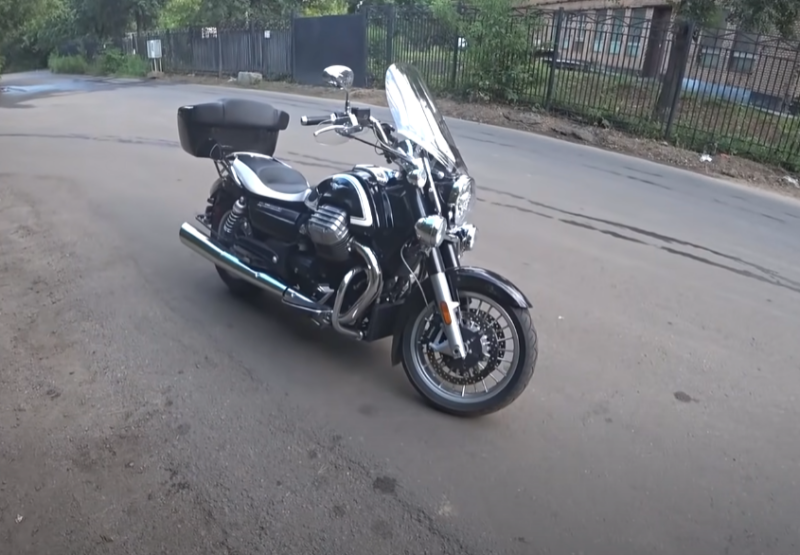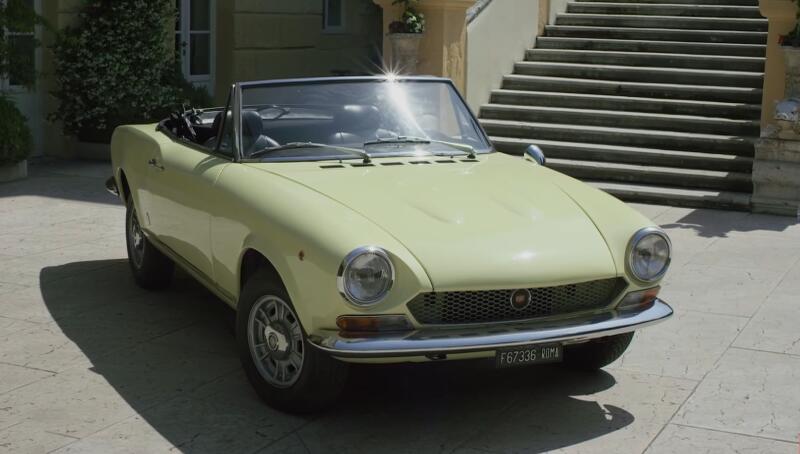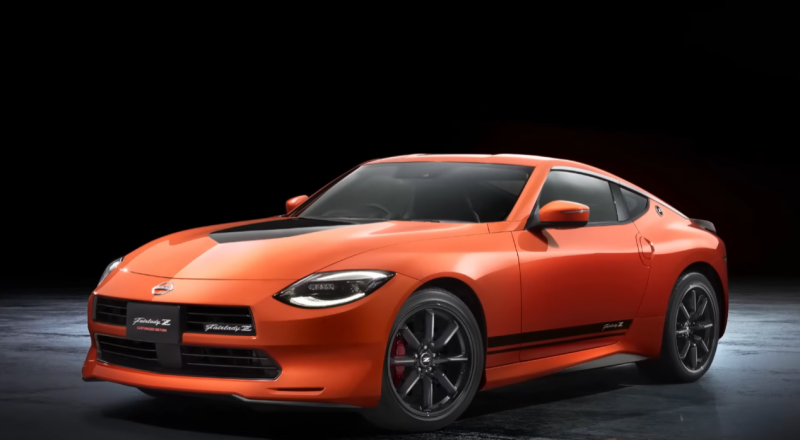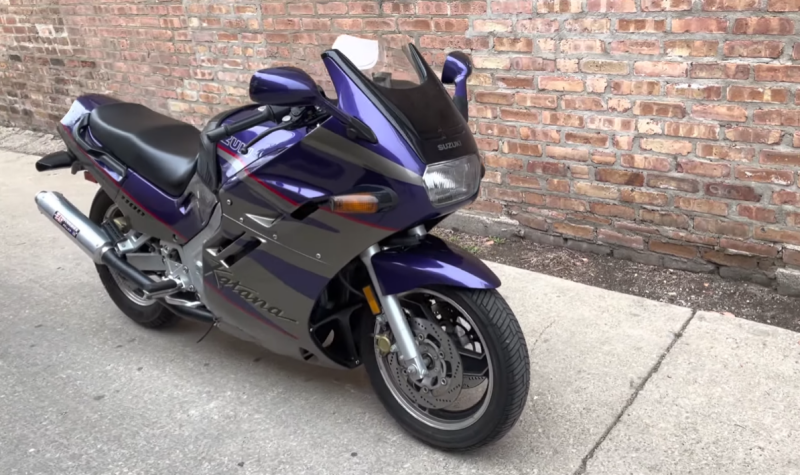Features like these made the GNX the absolute weapon of the eighties muscle car era! A total of 547 examples of the model were produced, and each began life as a "regular" Grand National. So, what is the difference between Grand National and GNX? Read on and find out! In the meantime, let's take a closer look at the history of appearance, and the characteristics of the Buick Grand National.
G-Body Platform
In fact, the Grand National is a charged version of the Buick Regal personal coupe. The car debuted in the early seventies, under the long "name" Century Regal Colonnade Hardtop Coupe, and looked interesting for the luxury segment of that period.
 Not so scary GN ... Photo: Youtube.com
Not so scary GN ... Photo: Youtube.comAfter downsizing and moving to a compact rear-wheel drive platform, the Regal is no longer something special: just another version of the new G-Body. Therefore, in 1981, Buick Motor Division began promoting the model to young buyers using the "Win on Sunday, Sell on Monday" strategy. Yes - Buick were going to race!
Buick in NASCAR
As part of the brand's new positioning, Buick took an active part in the automobile competitions of the eighties. The roar of the V8 could be heard at Daytona, and the Turbo V6 at the Indy 500 and IMSA. Through racing, the idea that Buick cars are synonymous not only with quality and comfort, but also with performance and high technology, was pushed into the minds of young people, in fact encroaching on the territory of the Pontiac sports department, and the avant-garde Oldsmobile.
Buicks have been in NASCAR since the fifties, but factory support hasn't been very noticeable, especially compared to Ford or Chrysler. Buick won the last stage victory in 1956, and all subsequent seasons were held with a “dry score”. So when "The King" Richard Petty decided to race the 500 Daytona 1981 in a Buick Regal, no one saw him as a contender for victory. The favorites were considered to be riders speaking on the Pontiac LeMans Aerocoupe, with streamlined bodies.
 Buick Grand National: profile view. Photo: Youtube.com
Buick Grand National: profile view. Photo: Youtube.comBut after a long and hard race, Richard Petty managed to emerge victorious from the battle with such aces as: Dale Earnhardt, Terry Labonte, Darrell Waltrip and Cale Yarborough. The "King" added the 7th Daytona 500 trophy to his collection, on the track he proved to the skeptics that the "brick" Buick is capable of winning! In 1981, in a 30-stage championship, Buick cars scored 12 victories and finished 21 times in the top 5. At the end of the season, Darrell Waltrip, who drove the Buick Regal, became the NASCAR champion. The following year, the dream continued to come true: Bobby Allison won the Daytona 500 and Darrell Waltrip became series champion again! In 1983, Bobby Allison brought Buick's last NASCAR title.
Birth of the "Big National"
The Grand National badge first appeared on the Regal coupe in 1982, as a showcase for Buick's victory in the NASCAR Winston Cup Grand National Series, but the changes were purely cosmetic.
 The very first version of the Grand National. Photo: Youtube.com
The very first version of the Grand National. Photo: Youtube.comIn 1984, the Grand National received a 200 horsepower engine, and in 1986, the power of the "black Buick" reached 235 horsepower - an indicator comparable to the Chevrolet Corvette! In 1987, the Buick GN received a 245 horsepower engine, finally "destroying" its rivals. In tests conducted by journalists, the Grand National regularly "circled" the Chevrolet Corvette, which was considered a supercar! No wonder "Darth Vader cars" sold like hot cakes: Buick sold 1987 GNs in 20.
"And instead of a heart - a fiery engine!"
When creating the engine for the Grand National, Buick engineers took an unusual path for the American auto industry. To get around the heavy-handed economy that robbed V8 engines of their former performance, Buick used a turbocharged V6.
 Buick V6 Turbo engine. Photo: Youtube.com
Buick V6 Turbo engine. Photo: Youtube.comSo, recall that the "regular" Grand National in 1987 was equipped with a 3,8-liter V6 turbo engine, and developed 245 horsepower. But 547 standard GN cars were sent to ASC/McLaren. As a result, the model received an even greater return on the motor, as well as tuning the suspension, interior and exterior. Officially, the GNX developed 276 horsepower, but it soon became clear that these figures were underestimated: in journalistic tests, the turbo V6 produced more than 300 horsepower! This allowed the GNX to overtake not only the Corvette, but also the current Ferrari, Lamborghini and Porsche models, making the "black Buick" one of the fastest production cars of the time!
Fast Four (Fast and Furious 4)
The Grand National, driven by Dominic Toretto, appears in the opening scene of the film when Toretto's team robs a fuel truck, unhooking "extra" tanks from it. During the chase, the Buick Dominica moves at high speeds in reverse for extended periods of time - something no production car can do.
 Buick Dominica Toretto is reversing. Photo: Youtube.com
Buick Dominica Toretto is reversing. Photo: Youtube.comThe film crew built 8 cars for Vin Diesel's character, but two of the most interesting are the ones with the bodies mounted backwards! The V6 engine was moved "in the trunk", and the rear axle - under the hood. In the scene where Vin Diesel drives the GN moving backwards, the car was driven by a stunt double hiding behind the passenger seat! All of the Buicks in the movie are real Grand Nationals, though one car had the turbocharged 3,8-liter V6 replaced with a naturally aspirated V8. This was done for the sake of action (improving response to the gas pedal), because turbo engines suffer from noticeable turbo lag.
And now, let's see what exactly distinguishes the Buick GNX from the Grand National. Let's start from under the hood:
✅ Garrett Hybrid turbine with ultra-light ceramic impeller
✅ Boost pressure - 1 bar
✅ Performance Garrett air-to-air intercooler
✅ Reinforced gearbox TH200-4R
✅ Installed additional oil cooler
✅ Engine Control Module (ECM) calibrated specifically for the GNX
✅ Silencers with reduced internal resistance
Charged Regals were perceived as cool not only for performance, but also for appearance. The boxy black body was associated with Darth Vader, so it's no surprise that the nickname stuck with the Grand National. By the way, there were not so many external differences: extended wheel arches and vents on the wings to remove heat from the engine compartment.
 Buick GN interior. Lord Vader costume not included! Photo: Youtube.com
Buick GN interior. Lord Vader costume not included! Photo: Youtube.comHowever, the 87th became the swan song of GN and GNX: from the following year, General Motors abandoned the "classic" G-Body platform, switching to the front-wheel drive W-Body. The Buick Grand National was one of the last old school muscle cars.
Dynamics GNX
Despite the fact that the GN family was not equipped with V8 engines, the performance and dynamic performance of the Buick GNX surpassed traditional American icons such as the Corvette and Mustang! "Lord Vader's car" accelerated to "hundreds" in 4.7 seconds, and the "quarter" drove in 12,7! Impressive acceleration made the GNX the ultimate drag weapon, putting it ahead of the Ferrari Testarossa (14.5 seconds) and the Lamborghini Countach 5000QV (13.7 seconds)!
Alternative
Imagine, for a second, that you liked this car but disliked black cars in general, and Buick in particular. And you have an alternative! It was possible to purchase, for example, the Chevrolet Monte Carlo, whose external differences were in the radiator grille, steering wheel and five-liter V8 under the hood.
 Buick GN rear view. Photo: Youtube.com
Buick GN rear view. Photo: Youtube.comWhile writing this material, the author watched a huge number of videos with the G-Body coupe, and came to the conclusion that he would choose the Oldsmobile 442 for himself, which we will definitely tell you about. Mainly because of the gearbox, which is noticeably different from those that were installed on Chevrolet, Pontiac and Buick. What would you choose?
